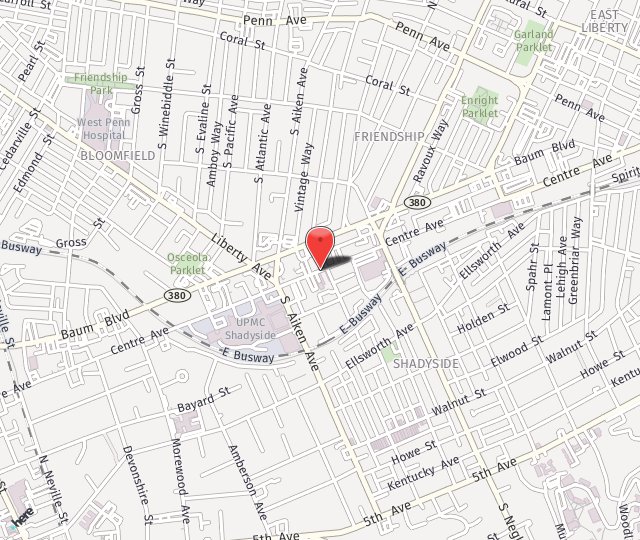Ophthalmologist (M.D.) is a medical doctor who specializes in both eye and vision care. He or she has completed higher levels of training and can differ in what they can treat and diagnose, compared to optometrists. Also, they are licensed to practice medicine and surgery, as they have completed college and at least eight years of additional medical training. They treat and diagnose all eye diseases, perform surgery, and prescribe eyeglasses for corrective vision.
Optometrist (O.D.) is a doctor who primarily provides care for diagnosing, treating, and managing vision changes. He or she is not a medical doctor but is licensed to practice optometry, which involves performing eye exams, prescribing eyeglasses, detecting eye conditions, and prescribing medications for certain eye diseases.
If over the age of 40, we generally recommend an annual visit in order to keep your eyes in good working order. Diseases and conditions of the eye can often be treated successfully if caught early.
Based on your individual needs and condition, the doctor will make a recommendation at your appointment on how often you should visit.
Many serious eye diseases often have little or no symptoms until they are well advanced. The only way to diagnose a problem early and to have the best possible outcome is to have annual eye exams.
Board certification requires the doctor to participate in a rigorous process of testing and peer evaluation in their specialty after completing medical school and residency training. Board certification in the United States is a voluntary process. It is often considered the best measure of a doctor’s knowledge, experience, and skills to provide quality healthcare within a given specialty.
As the medical field continues to change rapidly, it has become essential for doctors to stay current in patient treatments in order to provide high-quality care. Maintaining board certification requires that the doctors continue learning in their specialty, demonstrating their commitment to quality clinical outcomes and patient safety.
When seeking medical service, you should always ask if the doctor is board-certified.
Eye exams are unique, so each visit is different depending on what the doctor finds, and the doctor can request specialized testing for complex eye problems. Things that you could do to make your visit more helpful are to bring your recent medication list, your glasses, insurance info and cards, and your social security number. Comprehensive exams take about 1 to 2 hours or sometimes even more. Your evaluation will include medical history, previous ophthalmic history, current problems, current medications, and any eye medications. Visual acuity will be tested and refraction will be done as needed for the right prescription of glasses; eye muscle coordination checked; pupil exam; peripheral vision; slit lamp exam to check the front part of your eyes; pressure check; and dilation. Other tests will be performed as needed. After the examination, the doctor will discuss the results of the exam and ask if you have any questions.
When the pupil is functioning normally, shining a bright light into a person’s eyes causes the pupil to constrict. Using dilating drops allows the doctor to use the instruments necessary to evaluate the posterior (back) portion of the eye, including the retina and optic nerve, without the pupil becomes smaller. In fact, the large, dilated pupil allows a much better view all the way to the “far corners” of the retina.
It all depends on how sensitive your eyes are to light. If you can arrange for a driver then do so, but many of our patients drive themselves after having their eyes dilated. But you have to remember that your eyes will be blurry and sensitive to light. Make sure to bring sunglasses or ask for disposable safety glasses at our office (they are free); they help make your eyes more comfortable. Dilated eyes do not affect your ability to drive; you just have to be extra careful.
The length of your visit will vary based on your individual needs. Some appointments can be brief, such as post-operative visits. For in-depth visits such as cataract, retina, and glaucoma evaluation appointments, plan on setting aside 2-3 hours.
For first visits and annual eye examinations, set aside 1.5-2 hours from your scheduled arrival times as dilating your pupils can take up to 30 minutes.
Bring a list of any prescription or non-prescription medications you are currently taking. Include vitamins, herbs, and other remedies you may use. Include the dosages you take for each medicine or other substance, and how long you have been taking them.
If you currently wear corrective lenses, bring all pairs of eyeglasses you wear routinely. If you wear contacts that were prescribed elsewhere, bring a copy of your most recent contact lens prescription.
Finally, prepare and bring a list of questions or concerns that you would like to discuss with the doctor. And if you are interested in LASIK, dry eye, or cosmetic procedures such as laser hair removal evaluations, be sure to mention this — both when you schedule your exam and when you check in on exam day.
Also, be sure to bring your driver’s license and a copy of your vision insurance card and/or any other medical insurance cards you have if you are seeking insurance coverage for a portion of your fees.
No. Many patients are concerned about having eye drops administered and having their pupils dilated. However, this is completely painless, and no other part of the examination will be painful.
Visual acuity measurements evaluate how clearly each eye is seeing. As part of the testing, you are asked to read letters on distance and near reading charts. The results of visual acuity testing are written as a fraction, such as 20/40.
When testing distance vision, the top number in the fraction is the standard distance at which testing is done, 20 feet. The bottom number is the smallest letter size you were able to read. A person with 20/40 visual acuity would have to get within 20 feet of a letter that should be seen at 40 feet in order to see it clearly. Normal distance visual acuity is 20/20.
Autorefractors are special machines used to determine the correct lens prescription for your eyes.
If we’ve discovered you might need vision correction during your eye examination, we will need to determine just how “much” your eyes need to be corrected with eyeglasses or contact lenses. This is called measuring your “refraction.”
The measurement taken by an autorefractor can be translated into a prescription for your eyeglasses or contacts.
Please note that most medical insurance companies do not cover a refraction performed for prescription eyeglasses or contacts. In some cases, our patients have vision insurance that may cover the cost of a refraction. Our office charges 5 for a refraction.
Astigmatism is a vision condition in which light entering the eye is unable to be brought to a single focus, resulting in the distorted vision at all distances. Astigmatism is not a disease, but rather a vision condition that is quite common. It often occurs with other refractive errors like nearsightedness and farsightedness and can be corrected with glasses or contact lenses.
Nearsightedness (myopia) is a vision condition in which you can usually see close or near objects clearly, but cannot see distant ones as clearly.
Farsightedness (hyperopia) is a vision condition in which distant objects are usually seen clearly, but close ones appear blurred.
The most common use of bifocals is for the treatment of presbyopia in individuals aged 40 and over. Whether or not a person has needed vision correction when younger, by the early to mid-forties, the ability to accommodate or focus the eyes has diminished. Bifocals allow the wearer to see clearly both at distance and near despite the reduced focusing ability. Bifocals may also be used to help align the eyes if a person tends to over-cross his or her eyes at near. Presbyopia can be treated with simple vision reading glasses, contact lenses, lined bifocals, and no-line progressive addition lenses.
Dry eye syndrome may not make sense to a common person, because it leads to watery eyes. When eyes dry out they become irritated and uncomfortable, and that prompts the lacrimal glands to produce so many tears that they overwhelm the eyes’ natural drainage system.
Dry eye syndrome is more common in older adults. Other related factors could be some medical conditions and medications, allergies, infections, irritants, blockage of ducts that normally drain away tears, poor eyelid function, and other problems.
Depending on the situation, treatment can include drops, warm compresses, intense pulse light therapy, vitamins high in Omega-3, or special plugs. To read more on dry eye, click here.
Although there are many over-the-counter vitamins to choose from, we highly recommend that our patients use the PRN vitamins we carry to ensure that they are getting exactly the recommended supplement and the correct dosage their doctor is requiring for their eye health. Because of all the choices out there, many of our patients have gotten confused and are not getting the right supplements they need.
Our doctors did their research and found the best option for their patients based on the purity of the products and the clinical research results.
For more information on PRN vitamins, click here. http://www.prnomegahealth.com/Why-PRN/40/
Vision loss from glaucoma is permanent but can usually be prevented with early detection and treatment. Glaucoma management is usually a lifelong process that requires frequent monitoring and constant treatment.
A visual field test is performed to detect any issues in central and peripheral vision that can be caused by various medical conditions such as glaucoma, stroke, tumors, or other neurological issues.
The most common treatments for glaucoma have been the use of medication in the form of eye drops or pills, laser therapy, or surgery. Eye drops are commonly used to control glaucoma; however, they can be very expensive, messy, and have unwanted side effects. Furthermore, they may need to be taken for the rest of your life. Selective Laser Trabeculoplasty (SLT) does not rely on medicines, instead of using an advanced laser system to target specific cells of the eye. As a result, your body’s own healing response helps lower the pressure in your eye.
A lifestyle lens is a cataract surgery lens that allows for viewing at all distances and thus is suited for any lifestyle. In the past, cataract surgery lenses were monofocal, meaning that patients could only see near or far with any clarity. Monofocal lenses left patients dependent on glasses and contact lenses to do certain lifestyle activities. Monofocal lenses are still very common today.
Following monofocal lenses came multifocal lenses. Like their name would suggest, multifocal lenses allow for multiple viewing distances. These new lenses are often not covered by insurance and are also called “premium lenses” because patients often pay out of pocket in order to receive these lenses. The terms “Premium Lenses” and “Lifestyle Lenses” are basically interchangeable, although technically “premium” simply refers to the pricing, while “lifestyle” refers to their performance. This distinction is often overlooked, even by surgeons who speak of them.
There are currently two types (as opposed to brands) of lifestyle lenses: multifocal IOLs and accommodating IOLs. While both types of lifestyle lens (IOL) are premium, multifocal and accommodating lenses are very different. While both categories of lens aim to reduce glasses dependence, they do it in very different ways. Multifocal lenses are like bifocal glasses; they have multiple viewing regions. Accommodating lenses “accommodate” to allow for viewing multiple distances. This accommodation often involves the lens moving or bending to change shape.
Good candidates are those who have realistic expectations, are in good general health, and have hyperopia (farsightedness), presbyopia, or myopia (nearsightedness). If you have been diagnosed with eye conditions such as diabetic retinopathy, macular degeneration, or glaucoma, your surgeon will be able to advise you if you qualify for Lifestyle implants. If you have had previous refractive surgery such as LASIK or PRK, you may still be a candidate; however, there will be extra procedures done to ensure good results.
We accept cash, checks, credit cards, and debit cards.
Below is a list of the insurance plans that we currently accept. However, we are always adding new plans to our list. If you do not see your insurance listed, please call us at 412-681-8505 to verify if we accept your plan.
- AARP Health CareAdvantraAetna Navistar
- American Continental
- AmeriHealth
- APWU
- Block Vision
- Blue Cross Blue Shield
- BS Security 65 Plan
- Cigna
- Coventry Health Care
- Department of Public Welfare
- EyeMed Vision Care
- FEP Blue Shield
- First Health
- Freedom Blue
- Gateway Health Plan Primary
- Gateway Medicare Assured
- Handlers Benefits
- Health America
- Health Options Program/PSERS Health Options
- Health PlanAetna
- Highmark BC BS
- HumanaMail
- Medicare
- MedicareAetnaMedigapBlue PlanNALC
- Opticare Managed Vision
- Options Advantra
- Oxford Health Insurance Company
- PlanMarch
- PPO Blue
- Retired Railroad Medicare
- Security Blue
- State Workers’ Insurance Fund
- The Retired Enlisted Association
- TriCare for Life
- Tricare North region
- Tricare Regions 14 15
- UHC Community Plan Primary
- UMWA
- United Health Care
- UPMC for Life
- UPMC for You
- UPMC Health Plan
- UPMC Vision Advantage
- Vision Benefits of America
- Vision Care for Life
- Vision Care Medicare




